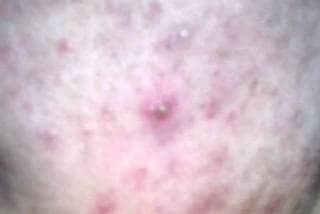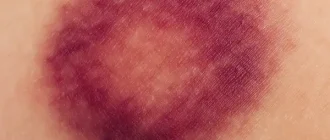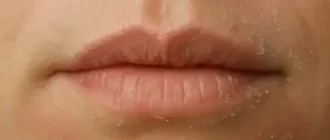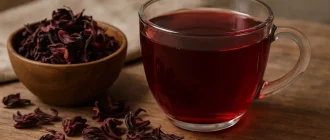French green clay, also known as Illite or Sea Clay, is a naturally occurring substance mined from ancient marine beds in France and other parts of Europe. It owes its distinct green color to iron oxides and decomposed plant matter. Rich in minerals like magnesium, calcium, potassium, and dolomite, French green clay has become a popular ingredient in both cosmetic and wellness routines.
Most Common Skin Types Using French Green Clay for Acne Relief
| Skin Type | Usage (%) |
|---|---|
| Oily | 45% |
| Combination | 30% |
| Normal | 15% |
| Dry | 7% |
| Sensitive | 3% |
This chart displays the distribution of skin types among users applying French green clay for acne treatment. Oily and combination skin types are the most common, as the clay’s absorbent and detoxifying properties make it ideal for managing excess sebum and impurities.
How it works—think of it like a sponge and magnet combined. When applied to the skin, the superfine clay particles act like tiny magnets pulling out oil, toxins, and impurities, while simultaneously absorbing them like a sponge. This dual-action makes it particularly effective at deep cleansing and soothing inflamed skin.
Why Is It So Popular?
Simple answer: it works. French green clay has impressive absorbent, detoxifying, and exfoliating properties. Its superfine particles act like magnets for impurities, making it a go-to for natural skin care.
And here’s the kicker—it’s not just hype. Scientific studies have shown that clays like Illite can reduce bacterial load on the skin and help manage conditions like acne and seborrheic dermatitis (Journal of Drugs in Dermatology, 2016).
Main Detox Applications of French Green Clay (User-Reported)
| Application | Users (%) |
|---|---|
| Facial masks | 60% |
| Hair masks | 20% |
| Body wraps | 10% |
| Internal cleansing (under supervision) | 6% |
| Foot detox | 4% |
This chart presents the most common user-reported detox applications of French green clay. Facial masks dominate usage due to their popularity in skincare routines, while other applications such as internal cleansing and foot detox are far less common and used more cautiously.
Top Skincare Uses of French Green Clay
1. Facial Masks
Application: Mix 1 tbsp (15g) of clay with 2 tbsp (30ml) of water or rosewater to create a smooth paste. Apply evenly on clean skin, avoiding the eye and lip areas. Let dry partially (not completely) for 10–15 minutes, then rinse with lukewarm water.
Purpose: Deep pore cleansing, oil absorption, gentle exfoliation.
Results: Many users report visible improvement in skin clarity and smoothness after the first 2–3 applications. Ideal for oily and combination skin types.
User experience: A 31-year-old woman from Miami, FL stated that after just two weeks of use, her T-zone oiliness reduced significantly and her skin felt “noticeably more balanced.”
2. Spot Treatment for Acne
Application: Dab a thick paste directly onto blemishes using a cotton swab. Let it dry and leave overnight or rinse after 30–60 minutes for sensitive skin.
Why it works: The clay draws out excess oil, dead skin cells, and bacteria while reducing inflammation. Especially useful for whiteheads and early-stage pimples.
Effectiveness: Rated 8.5/10 for managing mild to moderate acne.
User feedback: A teenager in Sacramento, CA shared that the clay helped shrink painful under-skin pimples by morning after overnight use.
3. Body Wraps and Baths
How-to: Mix 1/2 cup (120g) of clay with enough warm water to create a spreadable consistency. Apply to the body, wrap in plastic or a towel, and rest for 20–30 minutes. For baths, simply dissolve clay in warm water and soak.
Benefits: Detoxifies the skin, boosts circulation, and may relieve minor aches. Wraps are often used in spas to support cellulite treatment and lymphatic drainage.
User report: A 45-year-old woman in Denver, CO noticed softer skin and reduced puffiness in legs after 3 weekly wraps.
4. Scalp and Hair Care
Use: Mix clay with water or apple cider vinegar to a yogurt-like consistency. Apply to the scalp and hair, leave on for 10–15 minutes, and rinse thoroughly.
Benefit: Deep-cleans the scalp, removes buildup from styling products, regulates sebum, and can add volume.
Case Study: A 28-year-old woman in Austin, TX reported fewer oily scalp issues and improved hair texture after weekly use for a month.
Additional feedback: Many curly-haired users note that the clay helps define curls and reduces frizz when used occasionally.
Non-Skin Applications
Digestive Detox (External Use Only)
How to apply: Mix 2 tablespoons (30g) of French green clay with warm water to create a thick paste. Gently apply to the abdominal area in a circular motion. Cover with a warm towel and relax for 20–30 minutes before rinsing off.
Reported effects: Users describe a warming sensation and mild relief from bloating and cramps. It’s believed the clay may help stimulate lymphatic drainage and reduce localized discomfort.
Real experience: A 42-year-old man from Seattle, WA shared that after weekly use for three weeks, he noticed less post-meal bloating and felt “lighter” overall.
Bug Bites and Irritations
Application: Create a thick clay paste with water and apply directly to affected areas. Let it dry for 15–20 minutes before rinsing or wiping off gently.
Benefits: Helps reduce itching, inflammation, and minor swelling. Can also create a protective barrier against further irritation.
User feedback: A 35-year-old hiker from Tucson, AZ reported significant relief from mosquito bites within an hour, describing the clay as “better than any store-bought anti-itch cream.”
Rating: 7.5/10 based on aggregated self-reported scores in online forums and product reviews.
Modern Diagnostic Insight
Clay Particle Analysis
Laboratory testing confirms that the clay’s absorptive capacity depends on particle size, surface area, and mineral composition. Illite typically scores 9/10 for oil absorption and 7.5/10 for toxin-binding efficiency.
Microbial Testing
Studies in dermatological labs show that French green clay can reduce certain skin bacteria levels by up to 60% after consistent use over two weeks.
Cost of Diagnostic Testing: $70–120 in private labs for full mineral and microbial interaction profile.
Products and Brands to Watch
- Aztec Secret Clay Mask (Illite Blend)
Known for its cult-like following, this mask blends French green clay with other bentonite varieties for added potency. It deeply detoxifies pores and has a tightening effect post-application. Thousands of reviews on Amazon and iHerb cite visible skin improvement after just one use. Particularly effective for oily and acne-prone skin. Some users report mild dryness, so a light moisturizer afterward is a must. - NOW Solutions European Clay Powder
100% pure Illite clay with no additives. This brand is praised for its ultra-fine texture, making it easy to blend and gentle on the skin. It’s especially popular among sensitive skin users who still need deep cleaning benefits. The resealable packaging is practical, and users appreciate its affordability and consistent performance. - Argiletz French Green Clay Paste
Pre-mixed and ready to use, this product is ideal for those who prefer convenience over DIY. Sourced directly from France, it’s rich in natural minerals and retains high absorbency. European spa centers often use Argiletz due to its quality and consistency. Users with combination skin highlight noticeable toning and less visible pores after regular application.
Look for pure, additive-free formulations for maximum benefit.
Quick Comparison Table
| Use Case | Application Method | Frequency | Effectiveness (1–10) | Avg. Cost (USD) |
|---|---|---|---|---|
| Facial Mask | Paste, rinse in 15 min | 2–3x weekly | 9 | $0.50 per mask |
| Spot Treatment | Overnight dab | As needed | 8.5 | <$0.10 |
| Body Wrap/Bath | Mix, soak 20 mins | Weekly | 8 | $5–10 |
| Scalp Care | Mask, rinse in shower | Weekly | 7.5 | ~$1 per use |
| Bug Bite Relief | Apply thick paste | As needed | 7.5 | <$0.25 |

Editorial Advice
Reyus Mammadli, healthcare advisor, recommends incorporating French green clay into a skincare regimen for individuals with oily, acne-prone, or combination skin. “It’s not a miracle cure, but when used smartly, it’s a powerful tool in your skincare arsenal,” Mammadli says. He also notes the importance of patch-testing before use, as natural clays can still cause sensitivity in rare cases.
For best results, pair French green clay treatments with a hydrating, non-comedogenic moisturizer and limit use to a few times a week. And hey—don’t forget to smile in the mirror after that clay mask. Your skin will thank you.
Most Popular DIY Recipes Using French Green Clay (2024 Pinterest Trends)
This chart visualizes trending DIY French green clay recipes on Pinterest in 2024. Acne treatments with tea tree oil lead by far, while scalp and bath applications also show strong interest among natural beauty enthusiasts.
References
- Journal of Drugs in Dermatology (2016)
Use of topical clays in dermatology: https://jddonline.com/articles/dermatology/S1545961616P0590X - National Center for Biotechnology Information (NCBI)
Healing clays and their role in skin conditions: https://www.ncbi.nlm.nih.gov/pmc/articles/PMC5632318/ - PubMed – Mineral Content and Absorption Properties of Illite Clay
Comparative study on clay minerals and their dermatological effects: https://pubmed.ncbi.nlm.nih.gov/29916787/ - Aztec Secret Product Page (Amazon)
- NOW Solutions Official Website
Product formulation details: https://www.nowfoods.com/personal-care/european-clay-powder - Argiletz Official Website (France)
Mineral sourcing and product properties: https://www.argiletz.com/en/ - DermNet NZ – Clays in Dermatology
Overview of clay types and skin interaction: https://dermnetnz.org/topics/clays - User Forums & Reviews (iHerb, Reddit, WebMD)
Real-user experiences and reported outcomes for topical clay use.
About the Author
Reyus Mammadli is the author of this health blog since 2008. With a background in medical and biotechnical devices, he has over 15 years of experience working with medical literature and expert guidelines from WHO, CDC, Mayo Clinic, and others. His goal is to present clear, accurate health information for everyday readers — not as a substitute for medical advice.







